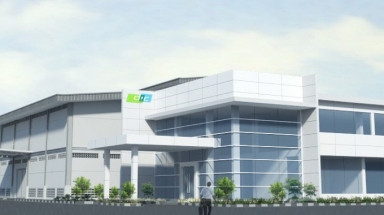General
DIC develops water based anode binder for LiBs
The Company has commenced sample shipments and will establish a global supply framework to facilitate sales in Japan, the Peoples’ Republic of China (PRC), the United States and Europe
-
By ICN Bureau | April 17, 2023
DIC Corporation recently announced the development of WATERSOL-LB, a waterborne anode binder for lithium-ion batteries (LiBs). As a waterborne product with a low environmental impact, WATERSOL-LB helps prolong battery life by, among others, suppressing expansion and ensuring low internal resistance. The Company has commenced sample shipments and will establish a global supply framework to facilitate sales in Japan, the Peoples’ Republic of China (PRC), the United States and Europe, with the goal of realizing annual sales of ¥1.0 billion in fiscal year 2025.
Since their commercialization in Japan in the 1990s, LiBs have become the power source of choice for everything from electric vehicles (EVs), smartphones, mobile phones and laptop computers to power tools, industrial machinery, aircraft, light fixtures and small cordless household appliances. The increasing sophistication of these and other products employing LiBs continues to drive the need for battery materials that contribute to improved performance by enhancing durability (increasing lifespan), range (extending run time) and charging speed (shortening charge time).
Anode binders act as adhesives to hold together the anode materials and active materials—into which lithium ions are inserted during charge and extracted during discharge—and cohere them to other additives and the current collectors. They thus constitute a critical component that influences both the mechanical strength of the electrodes and the overall performance of the LiB.
DIC’s new WATERSOL-LB is a synthetic acrylic LiB anode binder. Because it is waterborne, it exerts less of an impact on the environment during manufacturing than solvent-based binders. Conventional anode binders pose several challenges, including a tendency to deteriorate in high- or low-temperature environments, and difficulties responding to the volume expansion and contraction of high-capacity silicon active materials. DIC’s new waterborne offering achieves a significant improvement over conventional binders in terms of capacity retention during charge and discharge at temperatures as high as 45°C and as low as −10°C. This new product also makes it possible to reduce a LiB’s internal resistance, making it suitable for both high- and low-capacity anode materials. DIC is confident that WATERSOL-LB’s ability to satisfy these and other advanced performance requirements will play a key role in prolonging battery life.
In its DIC Vision 2030 long-term management plan, DIC set forth a basic strategy of creating new businesses in response to environment, safety and health (ESH)-related issues and social changes. In the area of sustainable energy, a pivotal focus is to commercialize functional materials for next-generation secondary batteries and fuel cells. Going forward, the Company will continue contributing to sustainable prosperity for society through the development and provision of sustainable products that respond to social imperatives by helping decrease energy consumption and environmental impact.
